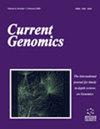Complete Chloroplast Genomes of Pterodon emarginatus Vogel and Pterodon pubescens Benth: Comparative and Phylogenetic Analyses
IF 1.4
4区 生物学
Q4 BIOCHEMISTRY & MOLECULAR BIOLOGY
引用次数: 0
Abstract
Background: The species Pterodon emarginatus and P. pubescens, popularly known as white sucupira or faveira, are native to the Cerrado biome and have the potential for medicinal use and reforestation. They are sister species with evolutionary proximity. Objective: The species Pterodon emarginatus and P. pubescens, popularly known as white sucupira or faveira, are native to the Cerrado biome and have the potential for medicinal use and reforestation. They are sister species with evolutionary proximity. Methods: The chloroplast genomes of P. emarginatus and P. pubescens were sequenced on the Illumina MiSeq platform. The genomes were assembled based on the de novo strategy. We performed the annotation of the genes and the repetitive regions of the genomes. The nucleotide diversity and phylogenetic relationships were analyzed using the gene sequences of these species and others of the Leguminosae family, whose genomes are available in databases. Results: The complete chloroplast genome of P. emarginatus is 159,877 bp, and that of P. pubescens is 159,873 bp. The genomes of both species have circular and quadripartite structures. A total of 127 genes were predicted in both species, including 110 single-copy genes and 17 duplicated genes in the inverted regions. 141 microsatellite regions were identified in P. emarginatus and 140 in P. pubescens. The nucleotide diversity estimates of the gene regions in twenty-one species of the Leguminosae family were 0.062 in LSC, 0.086 in SSC, and 0.036 in IR. The phylogenetic analysis demonstrated the proximity between the genera Pterodon and Dipteryx, both from the clade Dipterygeae. Ten pairs of primers with potential for the development of molecular markers were designed. Conclusion: The genetic information obtained on the chloroplast genomes of P. emarginatus and P. pubescens presented here reinforces the similarity and evolutionary proximity between these species, with a similarity percentage of 99.8%.狭边翼龙与短毛翼龙叶绿体全基因组的比较与系统发育分析
背景:该物种翼虎(terodon emarginatus)和P. pubescens,俗称白色sucupira或faveira,原产于塞拉多生物群系,具有药用和重新造林的潜力。它们是进化上接近的姐妹物种。目的:该物种翼虎(terodon emarginatus)和P. pubescens,俗称白色sucupira或faveira,原产于塞拉多生物群落,具有药用和重新造林的潜力。它们是进化上接近的姐妹物种。方法:在Illumina MiSeq平台上对麻豆和毛毛豆的叶绿体基因组进行测序。基因组是基于de novo策略组装的。我们对基因和基因组的重复区域进行了注释。利用这些物种和其他豆科植物的基因序列分析了它们的核苷酸多样性和系统发育关系。结果:油松和短毛松叶绿体全基因组分别为159,877 bp和159,873 bp。这两个物种的基因组都具有环状和四分体结构。两个物种共预测127个基因,其中110个为单拷贝基因,17个为倒置区重复基因。微卫星区分别为微卫星区141个、微卫星区140个。21种豆科植物LSC、SSC和IR基因区核苷酸多样性分别为0.062、0.086和0.036。系统发育分析表明,翼龙属与双翅鸟属相近,均属于双翅目分支。设计了10对具有开发分子标记潜力的引物。结论:本文所获得的麻豆和毛毛豆叶绿体基因组遗传信息强化了这两个物种之间的相似性和进化接近性,相似率为99.8%。
本文章由计算机程序翻译,如有差异,请以英文原文为准。
求助全文
约1分钟内获得全文
求助全文
来源期刊

Current Genomics
生物-生化与分子生物学
CiteScore
5.20
自引率
0.00%
发文量
29
审稿时长
>0 weeks
期刊介绍:
Current Genomics is a peer-reviewed journal that provides essential reading about the latest and most important developments in genome science and related fields of research. Systems biology, systems modeling, machine learning, network inference, bioinformatics, computational biology, epigenetics, single cell genomics, extracellular vesicles, quantitative biology, and synthetic biology for the study of evolution, development, maintenance, aging and that of human health, human diseases, clinical genomics and precision medicine are topics of particular interest. The journal covers plant genomics. The journal will not consider articles dealing with breeding and livestock.
Current Genomics publishes three types of articles including:
i) Research papers from internationally-recognized experts reporting on new and original data generated at the genome scale level. Position papers dealing with new or challenging methodological approaches, whether experimental or mathematical, are greatly welcome in this section.
ii) Authoritative and comprehensive full-length or mini reviews from widely recognized experts, covering the latest developments in genome science and related fields of research such as systems biology, statistics and machine learning, quantitative biology, and precision medicine. Proposals for mini-hot topics (2-3 review papers) and full hot topics (6-8 review papers) guest edited by internationally-recognized experts are welcome in this section. Hot topic proposals should not contain original data and they should contain articles originating from at least 2 different countries.
iii) Opinion papers from internationally recognized experts addressing contemporary questions and issues in the field of genome science and systems biology and basic and clinical research practices.
 求助内容:
求助内容: 应助结果提醒方式:
应助结果提醒方式:


